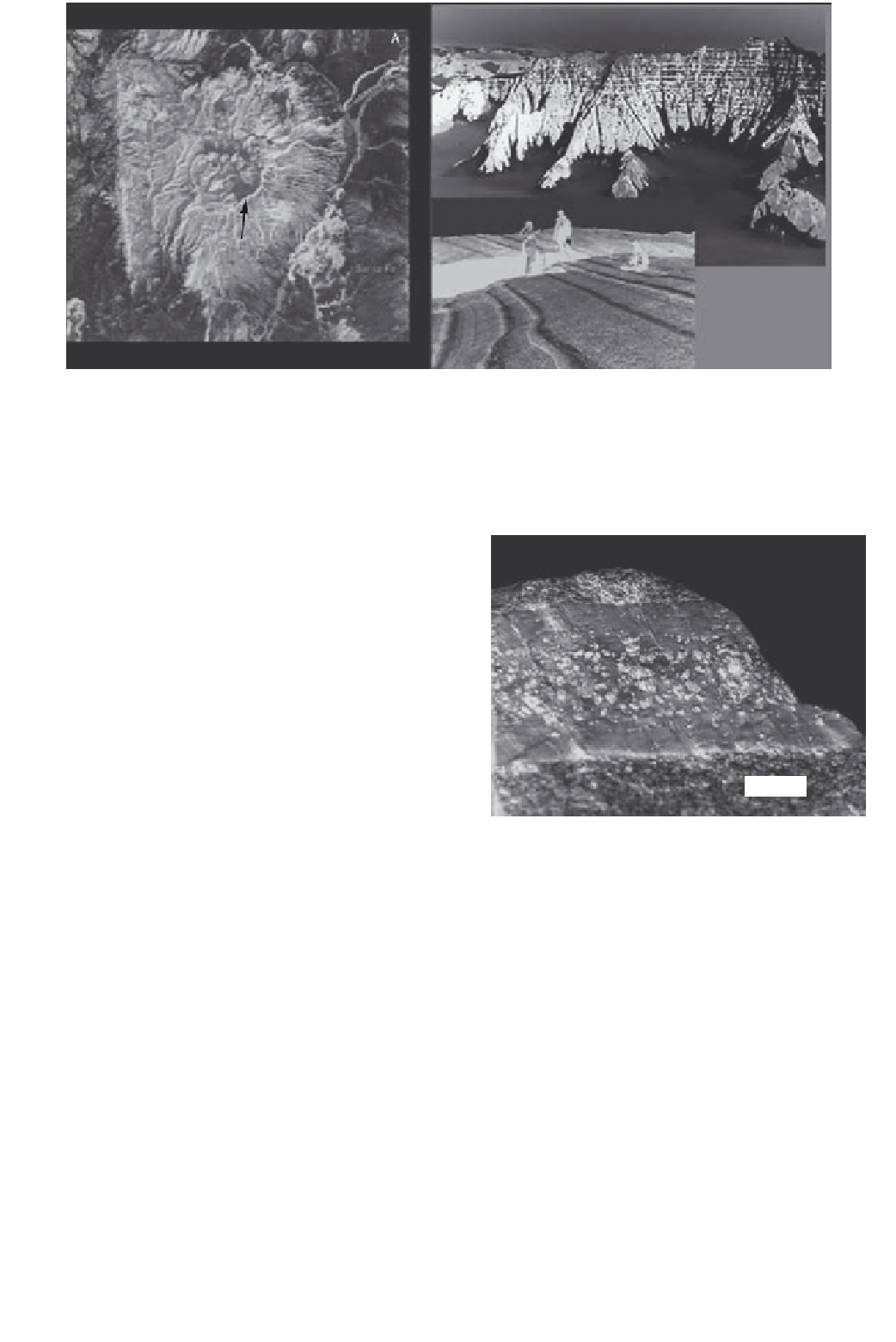Geoscience Reference
In-Depth Information
B
Caldera
rim
Santa Fe
Fig. 5.21
Two expressions of magma chamber evolution. (a) Satellite image of pronounced Valles caldera in the center of the Jemez Mts, New
Mexico, United States. The caldera was the source of massive outpouring of Pleistocene ignimbritic pyroclastic flows. (b) The Skaergaard
intrusion in east Greenland is exposed as a deeply eroded and exhumed magma chamber exhibiting generally gabbroic rocks displaying spec-
tacular layering (inset) of more feldspathic (light) and olivine/pyroxene (dark) rich layers formed by differential crystallization (related to
double-diffusive convection?) and crystal settling in the cooling magma chamber.
overall crystallinity and state of yield stress by the time the
anorthite begins to crystallize). At pressures greater than
6 kbar the anorthosite crystals are less dense than the
ambient basalt melt and so the crystals will tend to float
upward, segregating themselves from the other still-sinking
mineral phases noted above. In both cases, the motion of
crystal phases gives rise to zones of crystal concentration
within a magma chamber; such zones or layers are termed
cumulates
(Fig. 5.21b). There is plenty of evidence for the
existence of such cumulate layers in ancient igneous
plutons. Anorthite-rich cumulates are most plentiful in
plutons of great age within deeply eroded parts of the
Earth's crust (in so-called PreCambrian shields), support-
ing the physical arguments advanced above. However,
detailed calculations of crystal settling velocities are
complicated by other considerations, for example, (1)
crystal interactions involve the Einstein-Roscoe settling
law (Section 4.7), (2) crystals increase in diameter with
time, (3) settling may occur in non-Newtonian fluid
whose yield strength may physically prevent settling despite
the buoyancy forces being favorable, (4) the relatively low
viscosity of basic melt means that Rayleigh Numbers
(Section 4.20) for magma chambers are likely to exceed
greatly the limit for convective stability and therefore the
settling crystals will be subject to the vagaries of convective
redistribution, (5) cooling of repeated injections of fresh
batches of magma into a multicomponent crystallizing
Gabbro
Fig. 5.22
A dyke of ultrabasic composition cuts a gabbro. The dyke
contact margins are well seen (arrowed), as are numerous crystal phe-
nocrysts of olivinie set in a finely crystalline matrix. Note how the
phenocrysts are more numerous and larger in the center of the dyke
Rhum, scotland. This is probably due to crystal migration out from
the melt boundary layer during intrusion, an effect seen during the
granular shear of many fluid : grain systems. Dyke is 48 mm wide.
chamber raises the probability of occurrence of turbulent
mixing, particularly effective when basic magma is rapidly
jetted into preexisting basic magma (i.e. entrance Reynolds
numbers for free or wall jets are large), and (6) the occur-
rence of double-diffusive convection (Section 4.6).














Search WWH ::

Custom Search